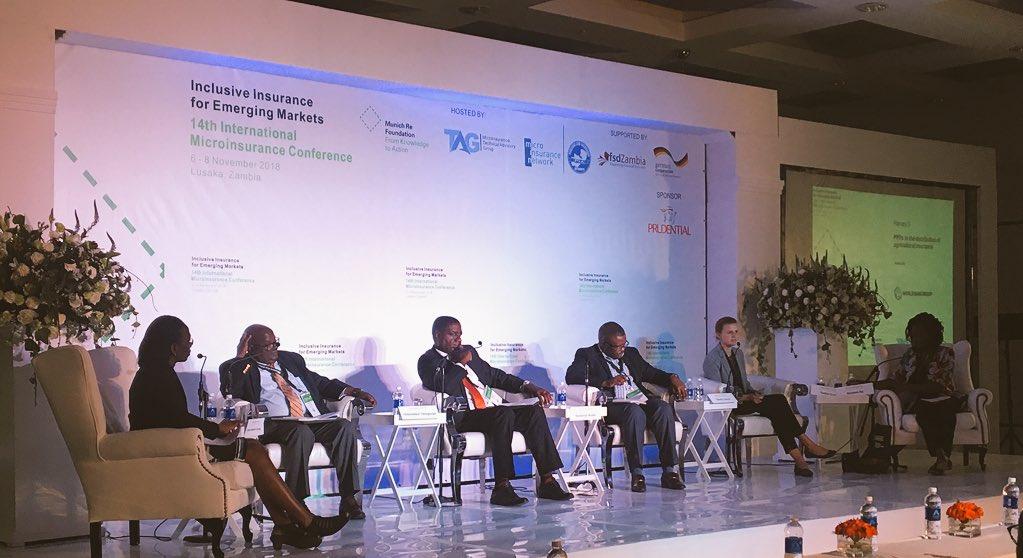The linkage between agriculture and climate change is undeniable. Any change in the climate has significant effects on crop yields and livestock, which intensifies the agriculture sector’s vulnerability to weather and disaster risks. More frequent extreme weather events and natural disasters distress the poor and the vulnerable most heavily and, as a result, agricultural and index-based insurance products have increasingly been regarded as significant tools for smallholder farmers to protect themselves from financial losses. As we know, insurance normally provides valuable access to credit and
Global
Content owner:
The linkage between agriculture and climate change is undeniable. Any change in the climate has significant effects on crop yields and livestock, which intensifies the agriculture sector’s vulnerability to weather and disaster risks. More frequent extreme weather events and natural disasters distress the poor and the vulnerable most heavily and, as a result, agricultural and index-based insurance products have increasingly been regarded as significant tools for smallholder farmers to protect themselves from financial losses. As we know, insurance normally provides valuable access to credit and
The high transaction costs of serving low-income clients in developing and emerging market economies demand innovative and technological advancements. Challenges that inflate operational costs include data collection, processing and management, premium payment mechanisms as well as claims verification and settlement. Index insurance products, mobile payment devices or more accurate weather and agricultural-yield information based on satellite data are examples of innovative approaches that can help to overcome these challenges.
13
May
The agricultural sector depends highly on nature, making it constantly exposed to exacerbating climate and disaster risks. To mitigate the problem, agriculture insurance and index insurance are regarded as valuable risk-management instruments because they allow farmers to continue to have access to finance and to build resilience against future risks. Having agriculture insurance is especially relevant in regions like Sub-Saharan Africa and Asia where 450 million smallholder farmers feed up to 80 percent of the developing world, according to the World Food Program. While insurance companies
Published on:
GIIF Program Manager Fatou Assah (far left) moderated a session at the Syngenta Foundation for Sustainable Agriculture International Conference on September 18, 2018, in Basel. The panel session "The Provider Perspective," discussants, including ACRE Africa's Rahab Kariuki, dove into detail on how many parts need to be moving in sync to deliver integrated solutions. | Key takeaways from the conference.
Last year, GIIF Program Manager Fatou Assah attended the Syngenta Foundation for Sustainable Agriculture's International Conference 2018 in Basel. In this interview, she talks about the roles of the public and private sector that need to move in sync to deliver integrated solutions to protect smallholder farmers from disaster risks. To view more videos from this series please click here.

Published on:
World Bank Group's Financial Sector Specialist Sharon Onyango (far left) moderated a session at the 14 th International Microinsurance Conference on November 7 in Lusaka. The panel session “ PPPs in the distribution of agricultural insurance” included discussants from both the public and private sectors, and dove into lessons learned from various PPPs from around the world and high-level considerations for setting up successful partnerships. The panelists were: Hailemelekot Teklegiorgis, Manager-in-charge - Financial Services, Ethiopian Agriculture Transformation Agency Humphrey Mulele

18
Sep
Topics:
How would you describe the international landscape of initiatives to help smallholders manage their risks? How is the emerging market structured and who are the innovators? What have they learned so far, current constraints and future opportunities? What insurance, financing, and other risk mitigation products and services are already available? Which gaps need to be filled, and how? These and related questions are the subjects of a global study by the Initiative for Smallholder Finance (ISF). Commissioned by the Syngenta Foundation, the study began in March. Its results will form a
The core objective of the project is to financially and programmatically support community-centered early action to reinforce and build climate resilience.
Content owner:
Index insurance is a type of agricultural insurance that can serve smallholder agricultural development and risk management by protecting assets and encouraging productive investments. Limited availability, accessibility, quantity and poor quality of data on the ground are some of the primary technical constraints preventing scale-up and sustainability of index insurance. Data were the focus of the project “Improving Agricultural Risk Management in Sub-Saharan Africa: Remote Sensing for Index Insurance”. This publication outlines the project, which investigated overcoming issues with ground

